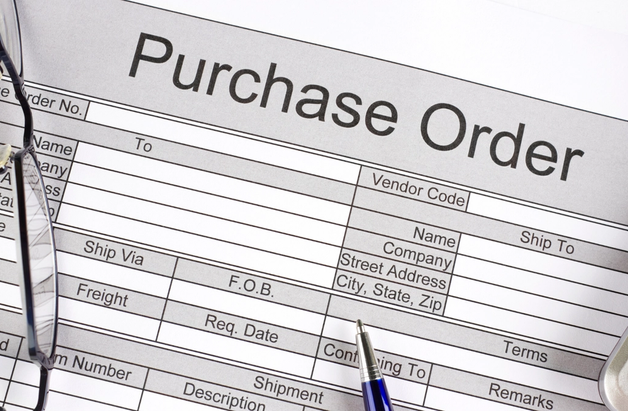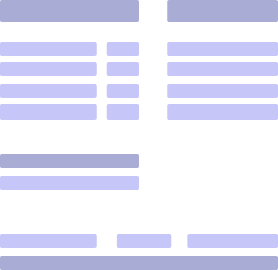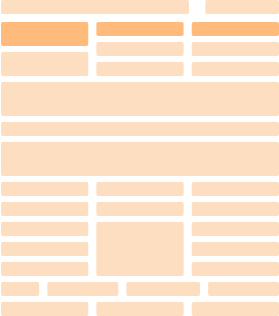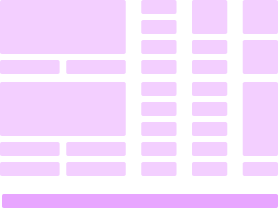Purchase Order vs Invoice: Difference, Uses, Types, & Importance

June 30, 2023
A successful transaction might depend on your understanding of the differences between a purchase order vs invoice, particularly in terms of when they are used and what purpose each document serves.
Invoices and purchase orders are instrumental in evaluating the progress of your business. Not only that but both invoices and purchase orders are instrumental in protecting both businesses and their customers.
This article will delve into the distinctions between a purchase order and an invoice, as well as the different variations for each document and more.
Let’s dive in.
Key Takeaways
- A purchase order is a document sent by a customer or buyer to a vendor to inform them of the goods and services that they want to acquire.
- An invoice is issued by the vendor to demand payment from the customer. It is sent upon fulfilling the goods purchased or the services requested.
- Aside from knowing how to distinguish a purchase order vs invoice, it is important to note that sellers need both documents to secure profits and monitor potential losses.
- In terms of identifying when to use a purchase order vs invoice, purchase orders are used to commence a transaction, while invoices are used to complete a sale.
What is a Purchase Order?
A purchase order (PO), also called an E-Purchase Requisition or E-Procurement, is a document containing a list of goods or services that a customer wants to acquire from a business or seller.
Compared to a simple inquiry, a purchase order is the formal start of a new transaction because when customers send a purchase order, it means they are not just interested in learning more about the products. Rather, they have made the decision to buy from the business.
For that matter, purchase orders are legally binding and can provide protection both for vendors and their customers.
Buyers can send purchase orders electronically via email or mail them to the seller’s business address. Once the seller acknowledges the details in the PO, it becomes a contractual agreement between the seller and their customer.
What is an Invoice?

An invoice is prepared by sellers to request payment from a buyer. It itemizes all the goods and services that the customer procured, along with the price per unit, payment terms, due date, and the total amount for the order.
Sellers send invoices after they have completed and delivered the goods and services in the purchase order. In other words, it succeeds the purchase order in a normal transaction and commences the time frame for when customers must complete their payment.
Unless accompanied by a contract or agreement signed by both the seller and buyer, invoices alone do not bear any legal weight and are not considered contracts in and of themsleves.
What Are Differences Between a Purchase Order and an Invoice?
It’s easy to differentiate a purchase order vs invoice; just bear in mind the following key factors:
- Purchase orders are sent to request goods and services, while invoices are sent to request payments from customers in exchange for delivering the items in the purchase order.
- Invoices contain the payment terms, cost per unit, and amount to be paid by the customer. Purchase orders simply itemize the products for procurement and the corresponding costs.
- Purchase orders are issued before a sale is made. Invoices follow a purchase order in that businesses send them to customers as a form of affirmation and adherence to their request.
- Invoices are signed by the seller and do not require a customer’s signature for validation. Purchase orders require both the customer’s and the seller’s signatures for legal implications.
- Purchase orders do not include the taxes applied to the sale. Invoices specify the taxes imposed on the total price of the goods for transparency and compliance with federal, state, or local regulations.
Here is a quick summary of the key differences between a purchase order vs invoice:
| Purchase Order | Invoice |
|---|---|---|
Purpose | Procurement | Payment request |
Contents | An itemized list of the services or products plus costs for procurement | The contents in the purchase order, payment terms, payment due date, total amount, and taxes applicable to the purchase |
Issued | Before acquiring the services and goods | After acquiring the services and goods |
Signature | Both the seller and buyer must sign the document | Only the seller’s signature is required |
Taxation | Does not include taxes | Includes applicable taxes for the transaction |
What Information Goes on a Purchase Order
Purchase orders must contain the following information:
- Purchase order number
- Purchase order date
- Buyer name and shipping address
- Seller name and business address
- Product itemization
- Total costs
The purchase order date refers to the date when the buyer created and issued the PO.
The buyer’s name identifies who sent the purchase order, while the shipping address is the location where the seller will deliver the goods. The seller’s name and business address represent the name of the party who provides the goods and their base of operations.
Product itemization enumerates all of the goods or services that the customer wants to procure from the business. Next to the itemization of the products is the corresponding cost for each item, followed by the total cost of the order.
What is a Purchase Order Number?
A purchase order number is a unique code assigned to each purchase to track the progress of each procurement.
PO numbers are an essential part of every transaction. It assures the customer that the seller has agreed to their request and is in the process of fulfilling it for them. In return, sellers use the PO number to keep their inventory and sales organized and up-to-date.
Types of Purchase Orders
Purchase orders also take on different forms, depending on their usage.
The different types of purchase orders are as follows:
Standard Purchase Order
Standard purchase orders are used for processing infrequent and one-time purchases. Examples of infrequent and one-time purchases include ordering food at a restaurant or purchasing goods from a store or an online shop.
Blanket Purchase Order
Blanket purchase orders are ideal for recurring procurements, client orders with definite start and end dates on the contract, and purchases that require specific adjustments in terms of the maximum number of orders allowed.
Planned Purchase Order
A planned purchase order is similar to a standard purchase order in that it contains the complete list of goods ordered, the costs, and all the necessary details you would find in a typical PO. The only difference in a planned purchase order is that it is meant for long-term purchases with tentative delivery dates.
Contract Purchase Order
Contract purchase orders are flexible agreements between a seller and their customer. It contains distinct delivery dates, details of the products that the seller agreed to provide, and other deliberate guidelines that govern the transaction.
How Are Purchase Orders Used?
Purchase orders are used mainly by customers to communicate their desire to procure or acquire a seller’s services or products. A buyer can be an individual, a fellow vendor, or a business.
For businesses and vendors, the purchase order is created when the vendor wants to acquire supplies for their inventory. Businesses also issue a PO when they outsource services and resources to external companies.
But more than acquiring goods or services, a duly fulfilled PO serves as a legally binding contract that holds both the customers and the sellers accountable for their end of the transaction. Vendors are obliged to provide the items requested in the purchase order, and the customers must give the proper compensation as indicated in the purchase order and invoice’s terms.
Why Are Purchase Orders Important?

Let’s explore the importance of purchase orders further by taking a look at the following functions they take on in every transaction:
#1. It Simplifies Invoicing
One of the easiest ways to identify a purchase order vs invoice is by figuring out at what point of the transaction each document is used.
Sellers need a reliable and complete reference when creating their invoices. It is important for invoices to reflect the same information on the purchase order; otherwise, they must reflect any changes made prior to the delivery of the goods.
At the same time, purchase orders ensure sellers charge the correct amount and set correct payment terms that adhere to the customer’s needs and limit instances of non-payment.
#2. It Makes Product Tracking Easier
With purchase orders, vendors can track the progress of each client's order more easily. They can assign purchase order numbers to each client and monitor the progress of the purchase. Also, sellers use the PO to manage their inventory.
This is true for suppliers because they typically cater to clients who order goods in bulk.
In B2B transactions between the seller and the client, the purchase order may indicate a specific set of conditions agreed upon by the seller and the client in terms of negotiating the rates, the expected deliverables, and even the invoicing dates.
#3. It is Legally Binding
Unlike invoices, wherein only the seller has to verify the contents of the document, purchase orders require the acknowledgment of both the seller and the buyer. This is to certify that both parties have reached a mutual consensus with regard to the order, costs, payment terms, and other conditions needed to carry out the exchange of goods and services.
What Information Goes on an Invoice?
A typical invoice contains the following information:
- Invoice number
- Invoice date
- Business or seller name, contact information, and address
- Customer or buyer name, contact information, and address
- Itemized list of the products and services provided
- Cost per item/Rate per hour (if a customer requested services)
- Taxes imposed on the purchase
- Discounts and other adjustments, if applicable
- Total amount
The invoice number is similar to the purchase order number in that it is a unique code assigned to each invoice to monitor customer payments more easily. The date on the invoice is the date when the invoice was issued.
While there are clear variations between the uses and format of a purchase order vs invoice, there are a couple of details that both documents share in common: Seller information and customer information.
Providing the name, address, and contact information of both the business and the customer at the top of the invoice clarifies who sent the invoice, who it was for, and for what purpose it was issued.
An itemized list of the products or services, including the costs and rates, guarantees the seller charges the customer according to their contract. Taxes and discounts will depend on any regulations or promotions that apply to the sale.
Finally, the total amount in the invoice is the price that customers must fulfill to complete their purchase.
Types of Invoices
Below are some of the different types of invoices used by vendors and businesses:
- Advance Invoice. It is issued by a seller to the customer to request partial or full payment even before the goods are completed and delivered.
- Commercial Invoice. This type of invoice is essential for importing and exporting goods as well as regulating foreign exchange processes.
- Consultant Invoice. Consultants and consulting firms create invoices to list all the services and equivalent rates provided to their clients.
- Credit Invoice. It is used when the seller has to process refund requests. A seller may also use credit invoices to make adjustments to a customer’s previous order.
- Deposit Invoice. Issuing a deposit invoice means the vendor requests payment from the buyer in the form of a bank deposit.
- Pro forma Invoice. Pro forma invoices are used to provide the buyer with an estimate of the goods and services. Proforma is used only when the buyer has committed to continuing their purchase.
- Recurring Invoice. Recurring invoices are created for services that are continuously requested by a client over a set period of time.
- Service Rendered Invoice. This type of invoice applies to businesses that charge customers based on the type of services they provide. It is commonly used for housekeeping and tutoring services.
- Small Business Invoice. It is used by small businesses to collect payments from their clients in exchange for acquiring their goods or services.
- Standard Invoice. The standard invoice is the default or regular invoice that is used in most typical business operations and simple transactions. Restaurants, retail stores, and even small businesses that cater to locally-based customers use standard invoices.
- Sundry Invoice. A sundry invoice is created for miscellaneous fees and customers who, from time to time, purchase items using credit.
How Are Invoices Used?
When comparing a purchase order vs invoice, one important distinction is that the former informs sellers of the products and services that a customer wishes to acquire from their business.
POs also provide a legally binding agreement between the seller and the customer. In contrast, invoices inform the customer of their payment obligations in exchange for acquiring the services or goods.
With an invoice, a seller has solid proof that they have completed the conditions indicated in the purchase order. They can also use the invoice alongside the purchase order and other contracts governing the transaction to request payment from the customer.
Invoices are also helpful in monitoring whether sales are steadily increasing. Sellers compare the purchase orders with their corresponding invoices to distinguish paid purchases from unpaid ones.
The Importance of an Invoice

What makes invoices so essential to every transaction? Let’s examine the key uses of an invoice:
#1. It Keeps Records of Accounts Receivable
Regardless of the type of transaction where an invoice is used, sellers need this document to keep their accounts receivable records updated and accurate. Inaccurate records may cause an imbalance in their profits and losses, and they can also lead to a lack of transparency in their tax records.
#2. It Speeds up Payments
Invoices include payment terms that specify the length of time a customer has to send the required payment. It prompts customers to settle their balances on or before the due date indicated in the invoice and adhere to the conditions set by the seller.
In some instances, the seller may offer discounts if the buyer sends their payment before the deadline, as exhibited in a 2/10 Net 30 trade credit.
#3. It Protects Sellers
Between a purchase order vs invoice, POs have a stronger legal impact. That doesn’t mean that invoices can't offer any kind of protection for vendors.
Scammers remain rampant these days, and they often target well-meaning businesses. A seller may hold on to their invoice along with other supporting documents and use them as evidence in case they end up getting scammed by a bogus buyer.
The invoice shows proof that they have fulfilled their end of the bargain and that they have suffered significant losses following a customer’s refusal to pay for what they ordered.
Why Do Companies Need Both Purchase Orders and Invoices?
While there are clear distinctions between the purposes of a purchase order vs invoice, companies need both documents to assess their ROI and losses. At the same time, both documents enable business owners to determine whether they have repeat customers or need to work on acquiring new customers to boost sales.
Purchase orders also give deeper insight into which services and products are in demand.
Meanwhile, invoices can be considered a form of insurance for the company because they serve as a reminder to the customer about their share of responsibilities to complete the transaction.
Furthermore, the presence of invoices and purchase orders implies a legitimate business.
Final Thoughts
Every business owner should know when to use a purchase order vs invoice and understand the legal implications and limitations imposed by each document.
Building an agreement to cover the exchange of money and goods around legal and acceptable perimeters ensures that both the buyer’s and seller’s rights are recognized and upheld.
Together, purchase orders and invoices represent the cycle that keeps every business well-oiled and customers satisfied.


